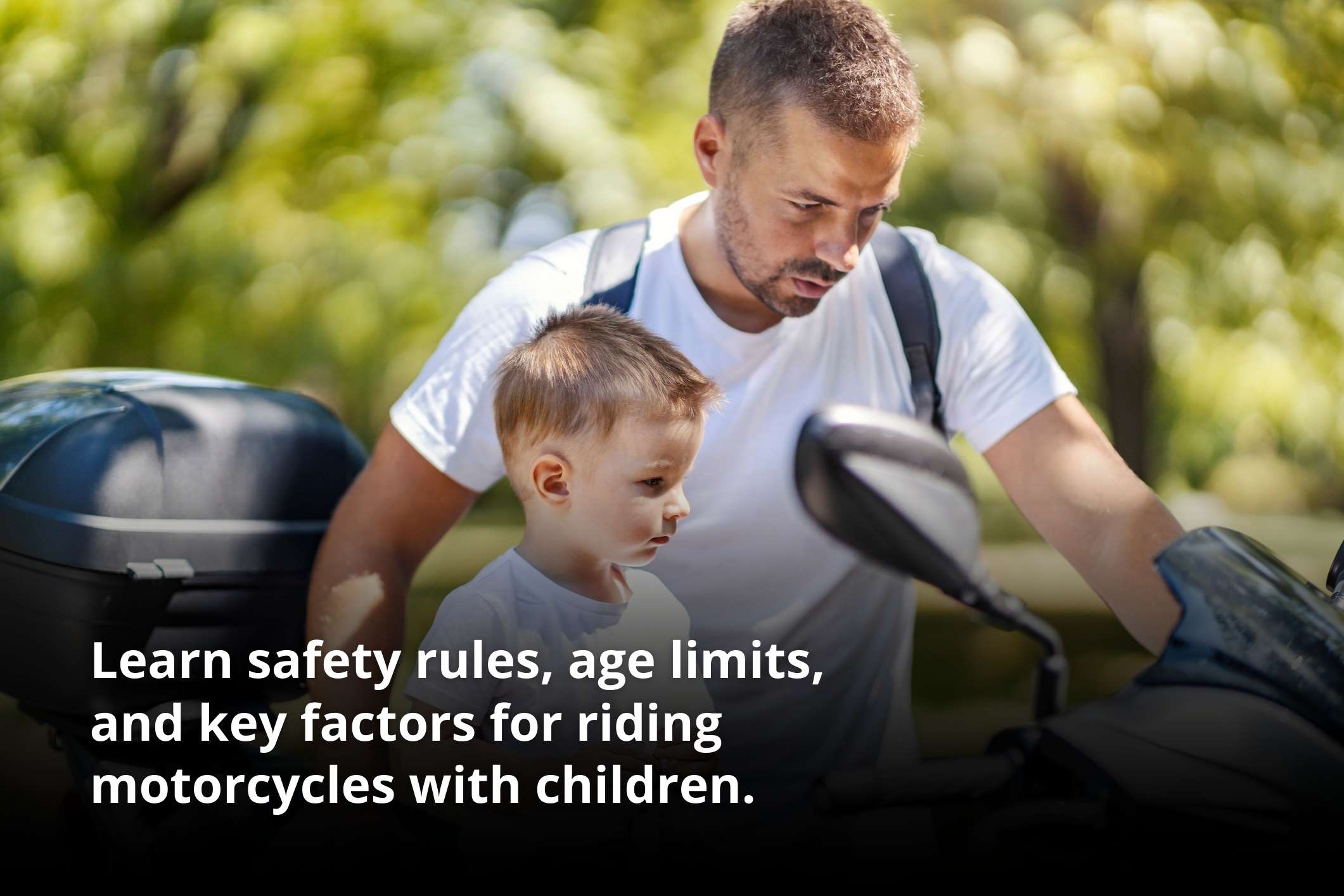Can a Child Ride on a Motorcycle?
Can a Child Ride on a Motorcycle?

.webp)

The roar of a motorcycle engine, the open road stretching ahead, and the wind rushing past create a sense of freedom and adventure for many riders. But what happens when you want to share that experience with your child?
When it comes to the question of "can kids ride on motorcycles," there's no straightforward yes-or-no answer. The answer depends on the state you live in, your child's physical development, and your commitment to prioritizing safety.
Whether you're dealing with a legal question about child motorcycle passengers or need help after a crash, contact Smith Law Center at (757) 244-7000 for a free consultation. We’re dedicated to protecting your family's rights and making sure every ride is a safe one.
State-by-State Age Rules for Kids on Motorcycles
Only a handful of states have specific rules on what age can a child ride on a motorcycle as a passenger. These states include:

The other 45 states do not set a fixed age. Instead, they consider factors such as the child’s height and ability to reach the footrests. In addition, a child passenger should have the maturity to understand what’s expected during the ride, wear proper safety gear, and be able to hold on securely.
Height and Physical Requirements for Young Motorcycle Passengers
In states that don’t set an age limit on a motorcycle passenger, the focus turns to height and physical readiness. Most safety experts agree that a motorcycle passenger should be at least about 4 feet 9 inches tall. This ensures the child can comfortably reach the footrests, which is a key safety factor.
Why are footrests so important? When a passenger's feet dangle freely, they can interfere with the motorcycle's operation or even get caught in the wheels or chain. Additionally, proper foot placement helps passengers maintain balance and stability, especially during turns and stops.
Beyond height, kids also need enough physical strength to hold on securely. Whether they’re gripping the rider or using dedicated handholds, they need the arm strength to maintain that grip throughout the ride. Any moment of weakness or distraction could lead to instability, so physical readiness is crucial for safe riding.
A motorcycle crash involving a child can create serious concerns for any parent. Virginia law may give your family the ability to recover compensation. Contact Smith Law Center at (757) 244-7000 for a free case review.
Assessing a Child’s Maturity for Motorcycle Rides
Determining can a child ride on a motorcycle isn’t just about height or age; it’s also about maturity. Unlike measuring height with a ruler, gauging maturity is a bit more subjective, but it’s arguably one of the most crucial factors.
A mature child understands and follows instructions. For example, they should know how to lean with the rider during turns rather than against them. It’s important for them to resist the urge to make sudden movements, wave at passing cars, or become distracted by the scenery. They need to grasp the importance of holding on at all times and staying alert throughout the ride.
Parents know their children best and need to make an honest assessment of whether their child has the maturity to handle the role of a passenger. When considering can kids ride on motorcycles safely, remember that a restless seven-year-old who can’t sit still might not be ready, while a shorter nine-year-old with strong focus and body awareness could be a perfect motorcycle passenger.
Ultimately, maturity is just as important as physical readiness. It’s the maturity that helps ensure a safe and enjoyable ride for everyone involved. So while height and strength matter, a child’s ability to stay focused and follow instructions is what truly makes them ready.
Motorcycle Safety Gear and Helmet Considerations for Children
Once you’ve determined that your child meets the height requirements and shows the right level of maturity, it’s time to focus on safety gear. Proper protective equipment is essential for all passengers, but especially for children.
Helmet Laws and Fit
A properly fitted helmet is non-negotiable; it must meet Department of Transportation standards and fit snugly. While some states have universal helmet laws requiring all riders and passengers to wear helmets, others have age-based rules or may not require helmets for certain adults. Because laws vary, it’s essential to check the local helmet regulations in any state you plan to ride in with your child.
That said, if you’re unsure of the law, it’s always safest to assume helmets are required. Providing a compliant helmet for both yourself and your child is the best way to ensure safety.
Protective Clothing
In addition to a helmet, children should wear protective gear like long pants—denim or specialized motorcycle pants—long sleeves, closed-toe boots that cover the ankles, and gloves. Regular sneakers and shorts offer little protection in case of a crash.
Practice Runs and Communication
Before hitting the open road, start with short trips in low-traffic areas. Use these practice runs to teach your child how to mount and dismount safely, where to place their feet, how to hold on properly, and how to lean with you through turns. Establish clear hand signals or communication methods for the ride.

Making Safe Motorcycle Riding Choices with Smith Law Center
Riding a motorcycle with your child can be an incredible adventure, but it’s vital to do it safely and legally. When you’re wondering, “Can a child ride on a motorcycle?” remember that preparation and knowledge are key.
If you have questions about motorcycle laws in your state or need guidance after an accident involving a young passenger, the Smith Law Center is here to help. We understand the complexities of motorcycle safety and are committed to ensuring that families can ride confidently.
Call (757) 244-7000 or fill out our contact form to speak with an experienced motorcycle accident attorney at no cost.
About Smith Law Center










